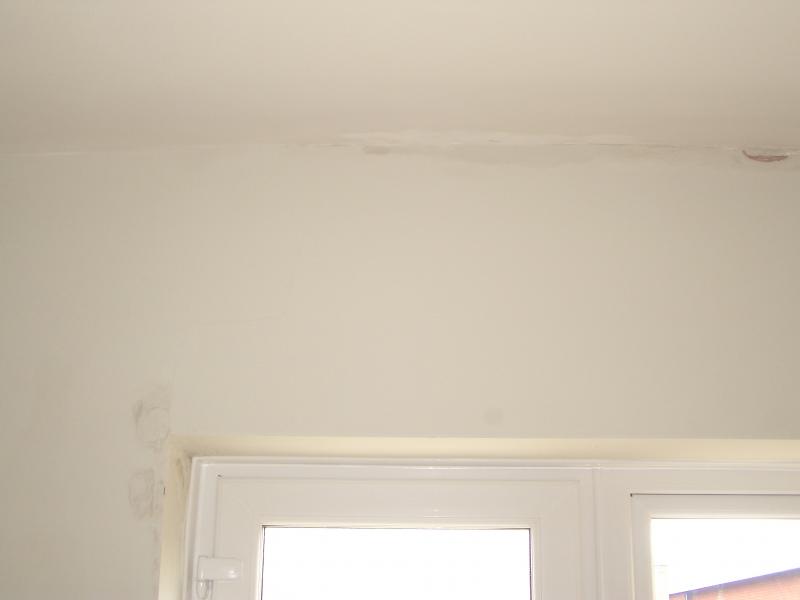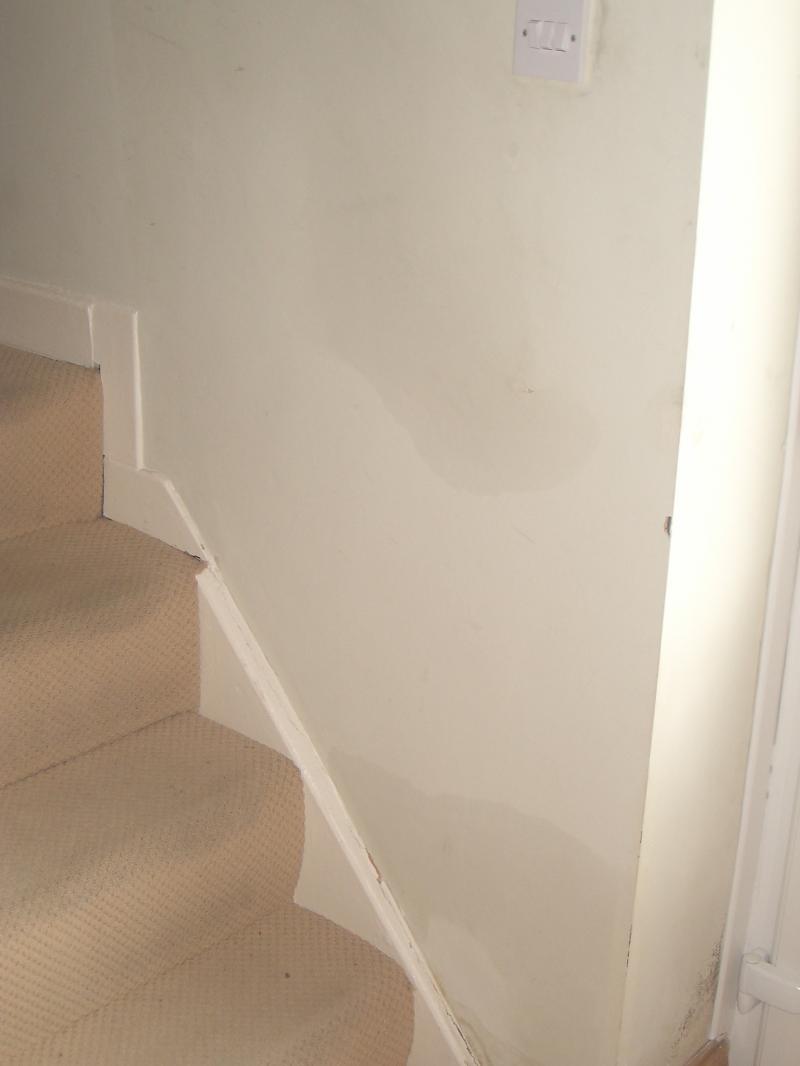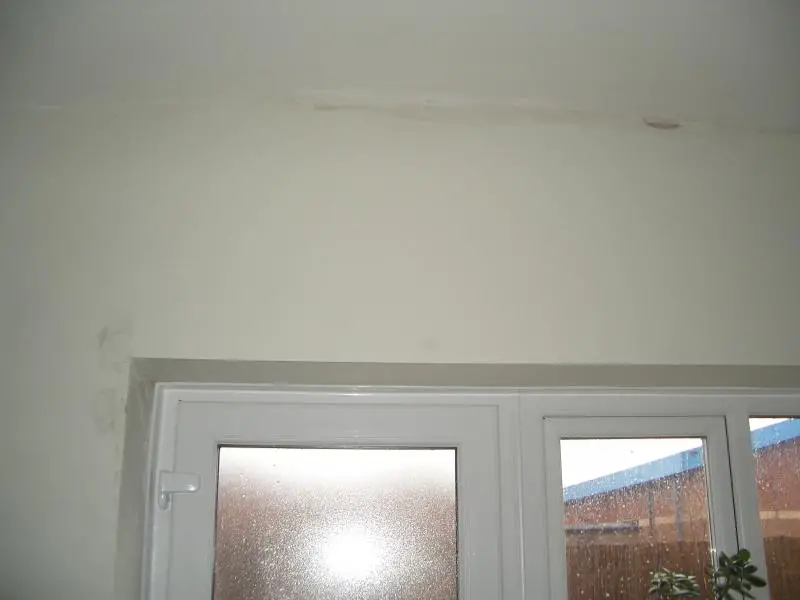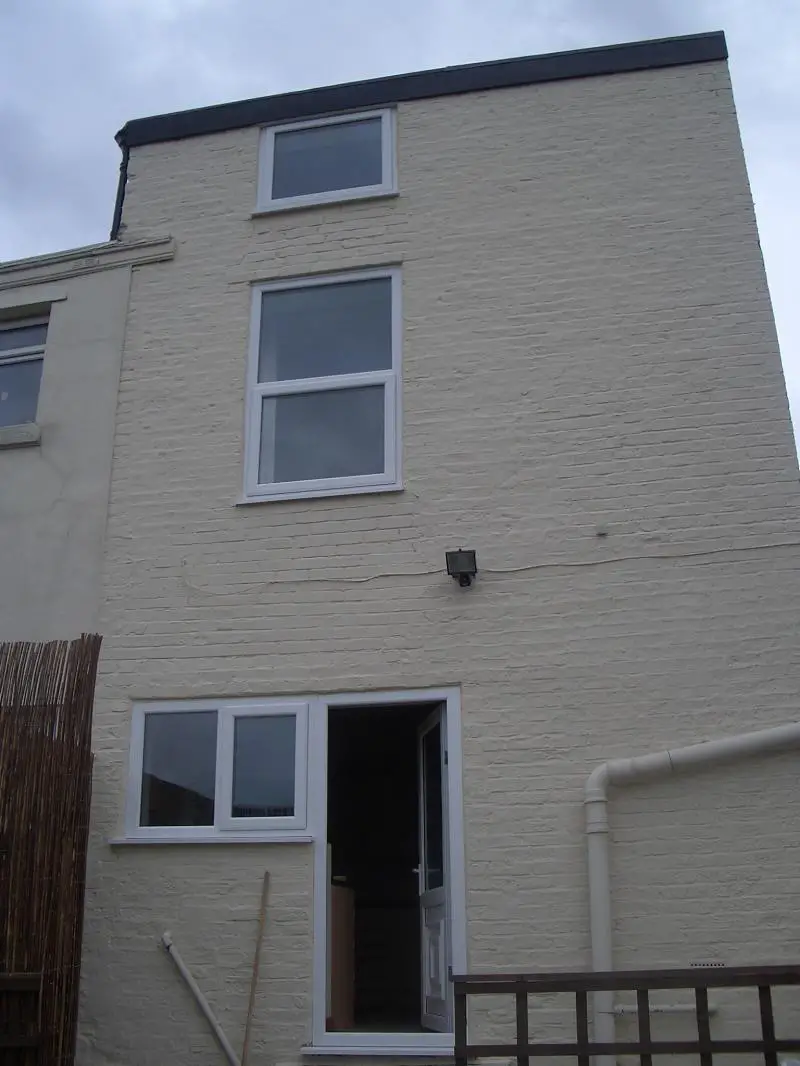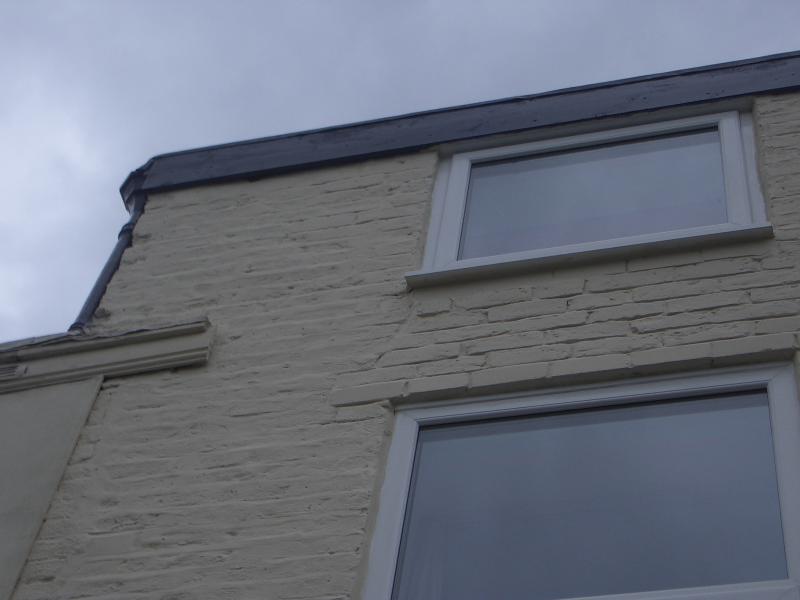We moved into a property 18 months ago and a damp problem started shortly afterward. The damp patches appear on the downstairs back wall of the house in the kitchen. There are several patches, some along the joint with the ceiling and a couple of larger patches (but more fluctuating in appearance) on the main wall - one close to the floor and one in the middle of the wall. See pictures. The wall nearly completely dried last summer in the warm weather but gets worse during rainfall. There is an almost vertical line on one area of damp (mid-wall) where one half is damp and one isn't - the damp patch appears solid to the brick when tapped and the non-damp sounds hollow. The wall is not a cavity wall.
The external wall is almost 3 storeys high (loft conversion) which was done about 10+ years ago. The wall is brick and the gutter is of a flat type that sites on top of the wall rather than overhanging, with a weather board on the wall. A downpipe runs from our roof to the neighbours gutter which is lower as they do not have a loft extension. There is a cable running on the outside of the wall at approx the height of the damp along the top of the downstairs wall but I don't see how this would cause it?
We had come to the conclusion that the damp was due to penetration through the wall which is south-west facing and receives the brunt of the weather. The wall had a poor paint job whic was flaking off. A couple of weeks ago we re-painted the entire exterior wall with 2 coats of pliolite-based masonry paint (after preparing surface), to try to waterproof the wall but allow evaporation. Whilst we did this we also checked the lead gulley gutter which was clear of debris and did not appear to have any cracks or damage.
We are now waiting and hoping for the damp internally to dry up and no more rain to penetrate. However during recent episodes of rain the damp patches have darkened leading me to believe it's not worked! During heavy rain we get large amounts of water dripping/blowing down the exterior wall from the weatherboard down the wall and onto the windows. Is there anyway to stop this? Is it possible to have gutters fitted that would catch the drips or some sort of overhang from the roof to protect the walls?
Any other ideas on where the water may be coming from?
The external wall is almost 3 storeys high (loft conversion) which was done about 10+ years ago. The wall is brick and the gutter is of a flat type that sites on top of the wall rather than overhanging, with a weather board on the wall. A downpipe runs from our roof to the neighbours gutter which is lower as they do not have a loft extension. There is a cable running on the outside of the wall at approx the height of the damp along the top of the downstairs wall but I don't see how this would cause it?
We had come to the conclusion that the damp was due to penetration through the wall which is south-west facing and receives the brunt of the weather. The wall had a poor paint job whic was flaking off. A couple of weeks ago we re-painted the entire exterior wall with 2 coats of pliolite-based masonry paint (after preparing surface), to try to waterproof the wall but allow evaporation. Whilst we did this we also checked the lead gulley gutter which was clear of debris and did not appear to have any cracks or damage.
We are now waiting and hoping for the damp internally to dry up and no more rain to penetrate. However during recent episodes of rain the damp patches have darkened leading me to believe it's not worked! During heavy rain we get large amounts of water dripping/blowing down the exterior wall from the weatherboard down the wall and onto the windows. Is there anyway to stop this? Is it possible to have gutters fitted that would catch the drips or some sort of overhang from the roof to protect the walls?
Any other ideas on where the water may be coming from?


